Alright, so there is no time to wait, Doctor Who is a British science-fiction television series that first aired in 1963, and it’s become an absolute classic over the years through multiple generations. This year – 2023 – is the 60th year of this quite complex fandom. Let me give you a brief overview of the Doctor Who timeline, so you can wrap your head around it. I am saying a brief overview, however… well. Uh, you will see what I mean.

At the heart of the story is the Doctor, a time-travelling alien known as a Time Lord from the planet Gallifrey. The Doctor travels through time and space in a ship called the TARDIS, which stands for Time And Relative Dimension In Space. It looks like a British police box on the outside, but on the inside, it’s much larger.
Want to learn more? Click on the topic of your choice here!
The Doctor has the ability to regenerate, meaning that when they’re about to die, they can transform into a new body and personality. This has allowed the show to run for a long time, with different actors playing the Doctor throughout the series. There have been 14 main incarnations of the Doctor, plus the “War Doctor” who appeared in a special episode. However, a true Whovian (a term used for a fanboy or girl of Doctor Who) would quickly interject here to say ‘Excuse me but what about…‘ – so to them I say… Geronimo! Let’s go into the Timey-Wimey timeline of the doctor. After all, we don’t want to be Lasagna now do we?!
Now, here’s a breakdown of the timelines of each of the doctors from the classic to the reboot. It’s okay if you don’t get it at the start… but keep reading! (And try not to blink too much!)
First Doctor (1963-1966):
The First Doctor, played by William Hartnell, marked the beginning of the Doctor Who series in 1963. This Doctor was portrayed as a somewhat mysterious and cantankerous character, with a strong sense of morality and justice. During his adventures, the Doctor was accompanied by his granddaughter Susan Foreman, who was also a Time Lord, and two teachers from Earth, Ian Chesterton and Barbara Wright.

Here’s an in-depth breakdown of the First Doctor’s era:
- An Unearthly Child (1963): This is the first-ever Doctor Who story, and it introduces the Doctor, Susan, Ian, and Barbara. The story begins in contemporary London when Ian and Barbara, curious about Susan, follow her to the TARDIS, which is parked in a junkyard. The Doctor, worried about his secret being discovered, takes them on a journey through time and space.
- The Daleks (1963-1964): In their second adventure, the Doctor and his companions encounter the Daleks, one of the most iconic and fearsome enemies in the Doctor Who universe. The Daleks are a race of mutants encased in robotic shells, bent on conquering the universe. This story takes place on the Daleks’ home planet, Skaro, and establishes the Doctor’s ongoing rivalry with the Daleks.
- The Aztecs (1964): The TARDIS crew arrives in ancient Mexico during the time of the Aztec civilization. The story revolves around the Doctor and his companions trying to prevent human sacrifice, which puts them at odds with the Aztec culture. This story highlights the Doctor’s policy of non-interference in the affairs of other cultures and civilizations.
- The Romans (1965): The Doctor and his companions visit ancient Rome during the time of Emperor Nero. While the Doctor gets involved in court intrigue, Ian and Barbara are captured as slaves. The story is a mix of comedy and drama, showing the Doctor’s ability to navigate complex situations with wit and intelligence.
- The Time Meddler (1965): The Doctor and his companions encounter another Time Lord, the Meddling Monk, who is attempting to change history for his own amusement. This story marks the first time the Doctor meets another member of his own race, and it explores the Time Lords’ rules of non-interference in the timeline.
- The Dalek Invasion of Earth (1964): The Doctor and his companions return to Earth, only to find it has been invaded by the Daleks. They work with a human resistance movement to defeat the Daleks and free Earth. This story is notable for Susan’s departure, as she decides to stay on Earth and build a life for herself.
- The Tenth Planet (1966): This story is the First Doctor’s final adventure and introduces the Cybermen, another iconic Doctor Who villain. The Cybermen are a race of beings who have replaced parts of their bodies with machinery in an attempt to survive. The story takes place at a remote Antarctic base, where the Doctor and his companions must stop the Cybermen from draining Earth’s energy. At the end of the story, the First Doctor regenerates into the Second Doctor, played by Patrick Troughton.
Throughout his adventures, the First Doctor and his companions encounter various alien species, historical figures, and challenges. This era of Doctor Who established many of the show’s recurring themes and elements, such as the Doctor’s compassion for all living beings, his ingenuity in solving problems, and his commitment to maintaining the balance of time and space.
Second Doctor (1966-1969):
The Second Doctor, played by Patrick Troughton, made his debut in 1966 after the First Doctor’s regeneration. Troughton’s Doctor was a stark contrast to Hartnell’s portrayal, being more whimsical, energetic, and humorous. The Second Doctor’s appearance and mannerisms were reminiscent of a cosmic hobo, with his scruffy attire and tousled hair. Despite his seemingly carefree nature, the Second Doctor was a clever strategist and tactician.

Here’s an in-depth breakdown of the Second Doctor’s era:
- The Power of the Daleks (1966): In this story, the newly regenerated Doctor, along with companions Ben and Polly, lands on the planet Vulcan, where they encounter a secret Dalek project. The Doctor must convince his companions and the humans on Vulcan that the Daleks are a threat before it’s too late.
- The Moonbase (1967): The Doctor, Ben, Polly, and new companion Jamie McCrimmon arrive on Earth’s Moon in the future. They discover a weather control station under attack by the Cybermen. The Doctor must use his wits and resourcefulness to defeat the Cybermen and save the Earth.
- The Ice Warriors (1967): The TARDIS crew arrives on a future Earth in the midst of a new ice age. They encounter a group of scientists who have discovered a frozen Martian warrior, known as an Ice Warrior. As the Ice Warrior thaws and revives, the Doctor must prevent an all-out war between humans and Martians.
- The Enemy of the World (1967-1968): The Doctor, Jamie, and new companion Victoria Waterfield find themselves on Earth in the 21st century. In this story, the Doctor has a doppelgänger, Salamander, a ruthless dictator who plans to control the world. The Doctor must impersonate Salamander to put an end to his evil schemes.
- The Web of Fear (1968): The Doctor, Jamie, and Victoria arrive in the London Underground, which is under attack by the robotic Yeti and their mysterious controller, the Great Intelligence. The story is notable for the introduction of Brigadier Lethbridge-Stewart, who becomes a recurring character in the series.
- The Invasion (1968): In this story, the Doctor and his companions team up with UNIT (United Nations Intelligence Taskforce) to stop an invasion of Earth by the Cybermen, who are being aided by a corrupt businessman named Tobias Vaughn.
- The War Games (1969): This is the Second Doctor’s final adventure and one of the longest stories in the classic series. The Doctor, Jamie, and new companion Zoe Heriot are caught up in a series of deadly war games orchestrated by a rogue Time Lord called the War Chief. The story ends with the Doctor being captured by his own people, the Time Lords, and put on trial for his interference in the affairs of other worlds. As punishment, the Doctor is forced to regenerate and is exiled to Earth.
During his tenure, the Second Doctor faced various foes, both old and new, including the Cybermen, the Daleks, the Ice Warriors, and even other Time Lords. Patrick Troughton’s portrayal of the Doctor added depth and complexity to the character, while also introducing a more light-hearted and mischievous aspect. The Second Doctor’s era laid the groundwork for many elements of the show that would be explored and expanded upon in subsequent seasons.
Third Doctor (1970-1974):
The Third Doctor, portrayed by Jon Pertwee, made his debut in 1970. Following the Second Doctor’s trial by the Time Lords, the Doctor is exiled to Earth with a new appearance and a disabled TARDIS, unable to travel through time and space. This era of the show saw a notable shift in tone and style, with more Earth-bound stories and a focus on action and adventure.

Here’s an in-depth breakdown of the Third Doctor’s era:
- Spearhead from Space (1970): The newly regenerated Doctor arrives on Earth, where he encounters the Autons, plastic humanoid creatures controlled by the Nestene Consciousness, an alien intelligence seeking to conquer Earth. The Doctor allies with UNIT, led by Brigadier Lethbridge-Stewart, to defeat the Autons. Following this adventure, the Doctor is offered a position as UNIT’s scientific advisor.
- Doctor Who and the Silurians (1970): The Doctor and UNIT investigate a series of attacks in a research facility near a network of caves. They discover an ancient reptilian race called the Silurians, who once ruled the Earth before humans. The Doctor tries to broker peace between the Silurians and humanity, but his efforts are ultimately unsuccessful.
- Terror of the Autons (1971): The Autons and the Nestene Consciousness return, this time aided by the Master, a rogue Time Lord and the Doctor’s arch-nemesis. The Master is a recurring villain throughout the Third Doctor’s era, with the two Time Lords constantly trying to outwit each other. This story also introduces companion Jo Grant, who becomes the Doctor’s ally in his adventures with UNIT.
- The Daemons (1971): In this story, the Master attempts to summon an ancient and powerful alien being, known as Azal, to gain ultimate power. The Doctor, Jo, and UNIT must stop the Master and prevent the destruction of Earth.
- The Sea Devils (1972): The Doctor and Jo encounter the Sea Devils, an aquatic cousin of the Silurians. The Master, imprisoned on a remote island, manipulates the Sea Devils in an attempt to escape and conquer Earth. The Doctor once again tries to negotiate peace between humans and the reptilian race, but conflict becomes inevitable.
- The Three Doctors (1972-1973): This special story celebrates Doctor Who’s 10th anniversary by bringing together the First, Second, and Third Doctors to battle a mysterious enemy known as Omega, a Time Lord trapped in a black hole. With their combined efforts, the Doctors defeat Omega and, as a reward, the Time Lords lift the Third Doctor’s exile.
- The Green Death (1973): The Doctor and Jo investigate a series of deaths linked to a chemical plant in Wales. They discover that the plant is responsible for the creation of giant, mutated maggots and a deadly green slime. This story is notable for Jo’s departure, as she decides to leave UNIT and the Doctor to start a new life.
- Planet of the Spiders (1974): In the Third Doctor’s final adventure, he faces off against the Great One, a giant spider from the planet Metebelis III, which seeks to conquer the universe. The Doctor sacrifices himself to save Earth, triggering his regeneration into the Fourth Doctor, played by Tom Baker.
During the Third Doctor’s era, the show introduced new enemies, such as the Master, the Silurians, and the Sea Devils, while also featuring familiar foes like the Daleks and the Cybermen. Jon Pertwee’s portrayal of the Doctor was suave, action-oriented, and more focused on science and technology. His close relationship with UNIT and Earth-based stories made this era of Doctor Who unique and memorable.
Fourth Doctor (1974-1981):
The Fourth Doctor, played by Tom Baker, made his debut in 1974 and went on to become one of the most iconic and longest-serving Doctors in the series. With his unmistakable curly hair, wide-brimmed hat, and long, colourful scarf, the Fourth Doctor’s eccentric and quirky personality captured the imagination of viewers.

Here’s an in-depth breakdown of the Fourth Doctor’s era:
- Robot (1974-1975): In his first adventure, the newly regenerated Doctor, with the help of UNIT and companion Sarah Jane Smith, faces a giant robot controlled by a secret organization intent on seizing power. This story marks the beginning of the Fourth Doctor’s adventures away from UNIT and Earth.
- The Ark in Space (1975): The Doctor, Sarah Jane, and new companion Harry Sullivan arrive on a space station housing the last survivors of humanity. They discover that the station is under threat from the Wirrn, a race of parasitic insects. The Doctor must outwit the Wirrn and ensure the survival of the human race.
- Genesis of the Daleks (1975): The Time Lords send the Doctor, Sarah Jane, and Harry to the planet Skaro during the creation of the Daleks. Their mission is to prevent the Daleks’ creation or alter their development to make them less aggressive. This story introduces the creator of the Daleks, the evil scientist Davros.
- The Sontaran Experiment (1975): The Doctor and his companions encounter the Sontarans, a race of warrior-like aliens, for the first time. The Sontarans are conducting experiments on captured humans to gather intelligence for their ongoing war against the Rutan Host.
- Terror of the Zygons (1975): The Doctor, Sarah Jane, and Harry return to Earth to help UNIT investigate mysterious attacks on oil rigs. They uncover a plot by the shape-shifting Zygons, who plan to conquer Earth and make it their new home.
- The Deadly Assassin (1976): The Doctor returns to his home planet, Gallifrey, after receiving a mysterious summons. He is framed for the assassination of the Time Lord President and must clear his name while uncovering a sinister conspiracy involving his old enemy, the Master.
- The Robots of Death (1977): The Doctor and new companion Leela arrive on a sandminer, where the crew is being murdered one by one. They discover that the ship’s robots are being reprogrammed to kill, and must find the mastermind behind the plot before it’s too late.
- The Talons of Weng-Chiang (1977): In this gothic, Victorian-era adventure, the Doctor and Leela encounter a series of grisly murders in London, tied to an ancient Chinese god and a time-traveling war criminal from the future.
- The Invasion of Time (1978): The Doctor becomes President of the Time Lords on Gallifrey and seemingly turns against his own people. In reality, he is working to prevent an invasion by the Sontarans, who seek to obtain the Time Lords’ secrets of time travel.
- The Key to Time (1978-1979): In this season-long arc, the Doctor and new companion Romana, a Time Lady, are tasked by the White Guardian to assemble the six segments of the Key to Time, an artifact capable of restoring balance to the universe. They face various challenges and enemies in their quest to complete the Key.
- City of Death (1979): The Doctor and Romana, now joined by a shape-shifting alien named K9, visit Paris and uncover a plot by an alien named Scaroth to steal the Mona Lisa in order to fund his time-travel experiments.
- Logopolis (1981): In the Fourth Doctor’s final adventure, he, Romana, and a new companion named Adric, attempt to stop the Master from using the mathematical expertise of the people of Logopolis to take control of the universe. The Doctor ultimately sacrifices himself to foil the Master’s plan, resulting in his regeneration into the Fifth Doctor, played by Peter Davison.
Throughout the Fourth Doctor’s era, the show introduced numerous classic villains such as the Sontarans and the Zygons, as well as memorable companions like Sarah Jane Smith, Leela, and Romana. Tom Baker’s whimsical, witty, and often unpredictable portrayal of the Doctor made him one of the most beloved incarnations of the character. The Fourth Doctor’s tenure was marked by a variety of stories, ranging from gothic horror to high-concept science fiction, contributing to the rich tapestry of the Doctor Who universe.
Fifth Doctor (1982-1984):
The Fifth Doctor, portrayed by Peter Davison, made his debut in 1982. Davison’s Doctor was a more vulnerable, human, and sensitive character compared to his predecessors. His youthfulness and affable nature stood in contrast to the eccentricities of the Fourth Doctor. The Fifth Doctor often sported a cricket-inspired outfit, complete with a panama hat and a piece of celery on his lapel.

Here’s an in-depth breakdown of the Fifth Doctor’s era:
- Castrovalva (1982): In his first adventure, the newly regenerated Doctor, along with companions Adric, Nyssa, and Tegan, find themselves trapped in the city of Castrovalva, which is actually an elaborate trap set by the Master. The Doctor must navigate the city’s spatial anomalies and outwit the Master to escape.
- Earthshock (1982): The Doctor, Adric, Nyssa, and Tegan encounter the Cybermen, who plan to destroy Earth by crashing an enormous spaceship into it. This story is notable for the tragic death of Adric, marking the first time a companion dies on-screen in the series.
- Mawdryn Undead (1983): The Doctor, Nyssa, and Tegan are joined by a new companion, Vislor Turlough, who is secretly working for the malevolent Black Guardian. In this story, they must unravel the mystery of Mawdryn, an alien who seeks to end his eternal cycle of regeneration.
- The Black Guardian Trilogy (1983): Comprising of the stories Mawdryn Undead, Terminus, and Enlightenment, this trilogy focuses on the Black Guardian’s efforts to manipulate Turlough into killing the Doctor. The Doctor ultimately thwarts the Black Guardian’s plans, and Turlough chooses to remain with the Doctor as a loyal companion.
- The Five Doctors (1983): This special 20th-anniversary episode brings together the first five Doctors, along with numerous companions, to face a mysterious threat in the Death Zone on Gallifrey. They discover that the Master, a rogue Time Lord named Borusa, and the Cybermen are all involved in a deadly game for the secret of immortality.
- Warriors of the Deep (1984): The Doctor, Tegan, and Turlough find themselves in an underwater base on Earth in the future. They must broker peace between humans and two returning foes: the Silurians and the Sea Devils, who have joined forces to reclaim the planet.
- Resurrection of the Daleks (1984): The Doctor, Tegan, and Turlough face the Daleks, who plan to rescue their creator, Davros, from a space prison. The story features a high body count and intense action, ultimately leading to Tegan’s departure from the TARDIS.
- The Caves of Androzani (1984): In the Fifth Doctor’s final adventure, he and new companion Peri Brown land on the planet Androzani Minor, where they become embroiled in a deadly conflict over a valuable substance called spectrox. The Doctor sacrifices himself to save Peri from spectrox poisoning, resulting in his regeneration into the Sixth Doctor, played by Colin Baker.
During the Fifth Doctor’s tenure, the show revisited classic villains like the Cybermen, the Master, the Daleks, the Silurians, and the Sea Devils. The Fifth Doctor’s era featured an ensemble of companions and explored themes of loyalty, sacrifice, and the consequences of the Doctor’s actions. Peter Davison’s portrayal of a more empathetic and compassionate Doctor added depth to the character, paving the way for future interpretations of the Time Lord.
Sixth Doctor (1984-1986):
The Sixth Doctor, portrayed by Colin Baker, made his debut in 1984. Colin Baker’s Doctor was known for his colourful patchwork coat, bombastic personality, and occasional arrogance. His tenure was marked by darker and more complex storylines that often challenged the Doctor’s morality.

Here’s an in-depth breakdown of the Sixth Doctor’s era:
- The Twin Dilemma (1984): In his first adventure, the newly regenerated Doctor, along with companion Peri Brown, must save a pair of genius twins from an evil slug-like creature named Mestor. This story is notable for showcasing the Sixth Doctor’s volatile and unpredictable nature following his regeneration.
- Attack of the Cybermen (1985): The Doctor and Peri encounter the Cybermen, who plan to change the course of history by destroying Earth in the past. The Doctor must outwit the Cybermen and their human allies while dealing with the machinations of the mercenary Lytton.
- Vengeance on Varos (1985): The Doctor and Peri arrive on the planet Varos, a dystopian society where torture and executions are broadcast as entertainment. They become embroiled in a rebellion against the cruel Governor and his alien ally, Sil, a greedy and manipulative creature.
- The Two Doctors (1985): In this multi-Doctor story, the Sixth Doctor and Peri team up with the Second Doctor and his companion Jamie to stop the Sontarans from obtaining the secret of time travel. The story explores the darker side of the Doctor’s nature and the consequences of his past actions.
- Revelation of the Daleks (1985): The Doctor and Peri visit the planet Necros, where the galaxy’s wealthiest citizens have their bodies cryogenically preserved. They discover a sinister plot by the Daleks and their creator, Davros, to turn the preserved bodies into a new army of Daleks.
- The Trial of a Time Lord (1986): This season-long arc sees the Doctor put on trial by the Time Lords for his interference in the affairs of other races. The prosecution is led by the Valeyard, a mysterious and malevolent figure later revealed to be a dark manifestation of the Doctor’s own nature. The Doctor faces various foes from his past, including the Master, the Cybermen, and the Vervoids. The Doctor ultimately defeats the Valeyard and exposes the corruption within the Time Lord High Council.
The Sixth Doctor’s tenure saw the return of classic villains such as the Daleks, the Cybermen, the Master, and the Sontarans, and introduced memorable foes like Sil and the Valeyard. Colin Baker’s portrayal of the Doctor was polarising, with some fans appreciating his darker, more complex personality, while others found it difficult to connect with the character. Despite its controversies, the Sixth Doctor’s era remains an essential chapter in the Doctor Who saga, exploring the darker aspects of the Doctor’s character and the consequences of his actions.
Seventh Doctor (1987-1989, 1996)
The Seventh Doctor, portrayed by Sylvester McCoy, made his debut in 1987. McCoy’s Doctor initially appeared as a more whimsical and comedic character, complete with his umbrella topped with a question mark handle. However, his personality evolved into a more manipulative, secretive, and enigmatic figure, often concealing his true intentions from his companions and enemies alike.

Here’s an in-depth breakdown of the Seventh Doctor’s era:
- Time and the Rani (1987): In his first adventure, the newly regenerated Doctor, along with companion Melanie Bush (Mel), is lured to the planet Lakertya by the Rani, a rogue Time Lord with sinister plans. The Doctor must outsmart the Rani and save the native population from her machinations.
- Paradise Towers (1987): The Doctor and Mel visit a seemingly idyllic tower block, only to discover that its residents are plagued by a series of mysterious deaths. They uncover a plot involving ancient technology and must work with the building’s inhabitants to defeat the evil force behind the chaos.
- Delta and the Bannermen (1987): The Doctor and Mel become entangled in a conflict between the peaceful Chimeron Queen Delta and the militaristic Bannermen, who seek to exterminate her species. The Doctor and Mel help Delta protect her people and thwart the Bannermen’s genocidal ambitions.
- Remembrance of the Daleks (1988): The Doctor, now joined by new companion Ace, returns to 1963 London to retrieve the Hand of Omega, a powerful Time Lord artifact. They face off against two rival factions of Daleks vying for control of the device, leading to the destruction of the Dalek homeworld, Skaro.
- The Happiness Patrol (1988): The Doctor and Ace arrive on the planet Terra Alpha, where enforced happiness is the law and any sign of sadness is punishable by death. They join a rebellion against the tyrannical ruler, Helen A, and her enforcer, the Kandyman, a robotic creature made of confectionery.
- The Curse of Fenric (1989): The Doctor and Ace visit a World War II-era military base where an ancient evil named Fenric is manipulating events to unleash chaos. The Doctor must confront Fenric and his army of vampiric creatures, the Haemovores, while also confronting the darker aspects of his own nature.
- Survival (1989): The Doctor and Ace return to present-day Earth, where they discover a deadly game being played between the human population and the predatory Cheetah People. They must stop the Master, who has become entangled in the Cheetah People’s world and seeks to exploit their power for his own ends.
- Doctor Who: The TV Movie (1996): Sylvester McCoy briefly reprises his role as the Seventh Doctor in this television film, which also introduces Paul McGann as the Eighth Doctor. The Seventh Doctor is fatally wounded during a confrontation with the Master, leading to his regeneration.
During the Seventh Doctor’s tenure, the show delved deeper into the Doctor’s character, exploring his mysterious past and his willingness to manipulate events and people to achieve his goals. Classic foes like the Daleks, the Cybermen, and the Master returned, while new enemies such as the Rani and Fenric were introduced. Sylvester McCoy’s Doctor, with his mix of whimsy, cunning, and darkness, added new layers to the Time Lord’s personality, paving the way for more complex interpretations of the character in the future.
Eighth Doctor (1996, 2013):
The Eighth Doctor, portrayed by Paul McGann, made his debut in the 1996 television movie, “Doctor Who: The TV Movie,” and later appeared in a mini-episode in 2013, “The Night of the Doctor.” McGann’s Doctor was a more romantic and dashing figure, with a deep sense of compassion and wonder for the universe.

Here’s an in-depth breakdown of the Eighth Doctor’s era:
- Doctor Who: The TV Movie (1996): Paul McGann’s Doctor is introduced following the regeneration of the Seventh Doctor. The Doctor finds himself in San Francisco in 1999, where he teams up with a surgeon named Grace Holloway to stop the Master from stealing the Doctor’s remaining regenerations. The Master’s plan ultimately fails, and the Doctor and Grace part ways, with the Doctor continuing his adventures through time and space.
- The Night of the Doctor (2013): In this mini-episode released as a prelude to the 50th-anniversary special, “The Day of the Doctor,” the Eighth Doctor attempts to rescue a pilot named Cass from a crashing spaceship. When Cass discovers the Doctor is a Time Lord, she refuses his help, as the Time Lords have become feared and despised due to their actions in the ongoing Time War against the Daleks. The Doctor and Cass both die in the crash, but the Doctor is revived by the Sisterhood of Karn, who offers him a special elixir to control his next regeneration. Realizing the universe needs a warrior more than a healer, the Doctor chooses to regenerate into the “War Doctor,” played by John Hurt.
While Paul McGann’s tenure as the Eighth Doctor was limited to the television movie and the mini-episode, his portrayal of the character left a lasting impression on fans. The Eighth Doctor’s romantic and adventurous spirit, coupled with his deep sense of compassion, added a new dimension to the Doctor’s personality. Additionally, the Eighth Doctor’s adventures have been further explored through a series of audio dramas produced by Big Finish Productions, which have been well-received and expanded the character’s story beyond his on-screen appearances.
War Doctor (2013):
The War Doctor, portrayed by John Hurt, was introduced in the 2013 50th-anniversary special, “The Day of the Doctor.” This previously unknown incarnation of the Doctor was created to show the darker, battle-hardened side of the character who fought in the devastating Time War between the Time Lords and the Daleks.

Here’s an in-depth breakdown of the War Doctor’s era:
- The Night of the Doctor (2013): As previously mentioned, this mini-episode shows the Eighth Doctor’s regeneration into the War Doctor, played by John Hurt. The Sisterhood of Karn offers the Doctor an elixir that allows him to control his regeneration, choosing to become a warrior in the face of the Time War.
- The Day of the Doctor (2013): The 50th-anniversary special sees the War Doctor team up with the Tenth (David Tennant) and Eleventh (Matt Smith) Doctors to face a momentous decision that will shape the future of the Time Lords and the universe. The War Doctor, disillusioned by the horrors of the Time War, intends to use a powerful weapon called “The Moment” to end the conflict by destroying both the Time Lords and the Daleks, effectively committing genocide. Throughout the episode, the War Doctor grapples with the morality of his actions and the consequences they have had on his future incarnations. Ultimately, with the help of the Tenth and Eleventh Doctors, they find a way to save Gallifrey, the Time Lord homeworld, by freezing it in a pocket universe, effectively ending the Time War without the mass destruction the Doctor had originally planned.
- The End of the War Doctor: At the conclusion of “The Day of the Doctor,” the War Doctor returns to his TARDIS, satisfied with the resolution and the knowledge that he has redeemed himself. As he begins to regenerate, he expresses hope that his next incarnation will be less battle-hardened and more like the Doctor he once was.
John Hurt’s War Doctor provided a fascinating glimpse into the Doctor’s darkest period, exploring the consequences of war and the heavy burden of responsibility that the character carried during the Time War. The War Doctor’s story adds depth to the character’s history, revealing the pain and sacrifice that shaped the Doctor’s subsequent incarnations.
Ninth Doctor (2005):
The Ninth Doctor, portrayed by Christopher Eccleston, marked the return of Doctor Who to television after a long hiatus. In 2005, the series was revived with a fresh take on the Doctor and his adventures, aimed at both long-time fans and a new generation of viewers. Eccleston’s Doctor, shaped by the experiences of the Time War, had a darker and more brooding demeanour but also displayed a sense of wonder and excitement.

Here’s an in-depth breakdown of the Ninth Doctor’s era:
- Rose (2005): The series relaunch introduces Rose Tyler, played by Billie Piper, a young woman who becomes the Doctor’s companion after they team up to stop the Autons, living plastic creatures controlled by the Nestene Consciousness. The Doctor invites Rose to join him on his adventures, and they begin their journey through time and space.
- The Unquiet Dead (2005): The Doctor and Rose travel to Victorian-era Cardiff, where they encounter the famous author Charles Dickens and face off against the Gelth, ethereal beings who use corpses as vessels to interact with the physical world. This episode showcases the Doctor’s ability to inspire and influence historical figures.
- Dalek (2005): The Doctor and Rose find themselves in an underground museum owned by a billionaire collector, who possesses a damaged Dalek. The Doctor confronts his oldest and deadliest enemy, struggling with his hatred for the Daleks and the memories of the Time War. This episode reintroduces the Daleks to a new generation of viewers.
- The Empty Child/The Doctor Dances (2005): In this two-part story, the Doctor and Rose meet Captain Jack Harkness, played by John Barrowman, a charming time-travelling con man. Together, they face a mysterious plague that turns its victims into gas mask-wearing zombies. Captain Jack becomes a recurring character and a fan favourite.
- Boom Town (2005): The Doctor, Rose, and Captain Jack face the Slitheen, a family of alien criminals who disguise themselves as humans using advanced technology. The Slitheen plot to destroy Earth for profit and the Doctor must outsmart them to save the planet.
- Bad Wolf/The Parting of the Ways (2005): In this two-part finale, the Doctor, Rose, and Captain Jack are trapped in a series of deadly game shows controlled by the Daleks, who have secretly infiltrated Earth’s satellite systems. The Doctor must confront the Dalek Emperor and his fleet, leading to a desperate and costly victory that results in the Doctor’s regeneration.
Christopher Eccleston’s Ninth Doctor provided a fresh start for the series, introducing new viewers to the world of Doctor Who while honouring the character’s legacy. The Ninth Doctor’s adventures featured familiar foes like the Daleks, as well as new enemies such as the Slitheen. Despite Eccleston’s brief tenure, his portrayal of the Doctor left a lasting impression on fans, setting the stage for the series’ continued success.
Tenth Doctor (2005-2010):
The Tenth Doctor, portrayed by David Tennant, is widely loved for his charm, wit, and energy. Tennant’s Doctor was a swashbuckling hero with a touch of vulnerability and a penchant for forming deep emotional connections with his companions. During his tenure, the Doctor travelled with companions like Rose Tyler, Martha Jones, and Donna Noble, and faced both familiar and new enemies.

Here’s an in-depth breakdown of the Tenth Doctor’s era:
- The Christmas Invasion (2005): In his first adventure, the newly regenerated Doctor, still adjusting to his new body, must save Earth from the Sycorax, an alien race bent on enslaving humanity. The Doctor asserts himself as Earth’s protector and continues his travels with Rose.
- School Reunion (2006): The Doctor and Rose go undercover in a school plagued by mysterious occurrences, where they encounter the Krillitanes, aliens using children’s minds for nefarious purposes. This episode also sees the return of Sarah Jane Smith, a classic companion from the Fourth Doctor’s era, and introduces K-9, a robotic dog.
- The Girl in the Fireplace (2006): The Doctor, Rose, and Mickey, Rose’s boyfriend, find a spaceship with portals to 18th-century France. They meet Reinette, Madame de Pompadour, who is being pursued by clockwork androids. The Doctor forms a deep bond with Reinette, showcasing his ability to connect with historical figures.
- Army of Ghosts/Doomsday (2006): In this two-part finale, the Doctor and Rose face an invasion by both the Cybermen and the Daleks. They are assisted by the alternate universe’s Torchwood Institute and Mickey, who has become a freedom fighter. The battle ends with a heart-wrenching farewell, as Rose becomes trapped in a parallel universe.
- Human Nature/The Family of Blood (2007): The Doctor, now traveling with medical student Martha Jones, hides from a dangerous alien family by transforming himself into a human and taking on the identity of a schoolteacher in 1913 England. This two-part story explores the Doctor’s humanity and the consequences of his actions.
- Blink (2007): In this iconic episode, the Doctor and Martha encounter the Weeping Angels, terrifying creatures that can only move when not being observed. The Doctor must rely on Sally Sparrow, a young woman from the present day, to defeat the Angels and save the day.
- Utopia/The Sound of Drums/Last of the Time Lords (2007): In this three-part finale, the Doctor, Martha, and Captain Jack Harkness discover the Master, another Time Lord, has survived the Time War and is plotting to conquer Earth. The Doctor must face his oldest nemesis and confront the reality that he may not be the last of his kind.
- Silence in the Library/Forest of the Dead (2008): The Doctor and his new companion, Donna Noble, arrive in a library that holds every book ever written, only to find it deserted and haunted by shadow creatures called the Vashta Nerada. They meet River Song, an enigmatic figure with a deep connection to the Doctor’s future.
- The Stolen Earth/Journey’s End (2008): In this two-part finale, the Doctor, Donna, and an ensemble of companions from the revived series join forces to face the Daleks and their creator, Davros. The Doctor’s actions lead to a heart-breaking departure for Donna, as she can no longer travel with him.
- The End of Time (2009-2010) – Continued: In this two-part special, the Doctor confronts the Master, who has been resurrected and is threatening Earth once again. The Doctor also discovers that the Time Lords, led by Rassilon, are attempting to escape the Time War by breaking free from the time-locked moment, which would result in the destruction of the universe. The Doctor must choose between saving his people and the universe. Ultimately, he sacrifices his own well-being to save his friend Wilfred Mott, which triggers his regeneration into the Eleventh Doctor.
Throughout David Tennant’s tenure as the Tenth Doctor, the series explored a wide range of themes and emotions, from the joys of adventure to the heartbreak of loss. The Tenth Doctor’s relationships with his companions were a central aspect of his era, creating powerful connections that shaped his character and the series’ narrative. Tennant’s Doctor faced a variety of foes, from the terrifying Weeping Angels to the cunning Master, all while displaying his trademark wit, charm, and determination. The Tenth Doctor’s era remains a fan favourite, and his impact on the series is still felt in subsequent seasons.
Eleventh Doctor (2010-2013):
The Eleventh Doctor, portrayed by Matt Smith, is known for his youthful energy, eccentric mannerisms, and bow-tie-wearing quirkiness. Matt Smith’s Doctor brings a sense of wonder and curiosity to the role, while also displaying a depth of character shaped by his past experiences. His adventures with companions Amy Pond, Rory Williams, and Clara Oswald feature a mix of light-hearted fun and dramatic, high-stakes storytelling.

Here’s an in-depth breakdown of the Eleventh Doctor’s era:
- The Eleventh Hour (2010): In his first adventure, the newly regenerated Doctor crash-lands in young Amelia Pond’s garden. He promises to return for her in five minutes, but accidentally arrives twelve years later. The Doctor, now joined by adult Amy Pond, must save the Earth from the shape-shifting Atraxi.
- The Time of Angels/Flesh and Stone (2010): The Doctor and Amy encounter River Song and face the terrifying Weeping Angels on the wreckage of the starship Byzantium. This two-part story further explores the mystery of River Song’s identity and her connection to the Doctor.
- The Pandorica Opens/The Big Bang (2010): In this two-part finale, the Doctor, Amy, and Rory find themselves in the midst of an elaborate trap set by a coalition of the Doctor’s enemies. The Doctor must unravel the mystery of the Pandorica, an ancient prison, and prevent the destruction of the universe caused by a crack in time.
- The Impossible Astronaut/Day of the Moon (2011): The Doctor, Amy, Rory, and River Song are summoned to 1969 America, where they confront the Silence, a powerful and secretive organization with the ability to make people forget their existence upon looking away from them. This two-part story sets in motion the season-long arc surrounding the Silence.
- A Good Man Goes to War (2011): In this mid-season finale, the Doctor assembles an army to rescue Amy and her newborn child, Melody, from the clutches of the Silence. The Doctor faces a devastating revelation about Melody’s true identity, and River Song’s connection to the Doctor is finally revealed.
- The Wedding of River Song (2011): The Doctor confronts the Silence once more and must find a way to avert his own death at the hands of River Song. The season culminates in a time-twisting adventure that changes the Doctor’s fate and solidifies his bond with River.
- Asylum of the Daleks (2012): The Doctor, Amy, and Rory are kidnapped by the Daleks and sent to a planet that serves as a prison for the most dangerous Daleks in existence. The Doctor encounters Oswin Oswald, a resourceful young woman with a tragic secret.
- The Name of the Doctor (2013): The Doctor and Clara travel to the Doctor’s tomb on the planet Trenzalore, where they must confront the Great Intelligence, a malevolent entity from another universe. The Great Intelligence seeks to destroy the Doctor by rewriting his entire timeline, but Clara makes a sacrifice to save him.
- The Day of the Doctor (2013): In the 50th-anniversary special, the Eleventh Doctor teams up with the Tenth Doctor and the War Doctor to resolve the conflict of the Time War and save Gallifrey. The Doctors’ actions rewrite the Doctor’s history and set the stage for a new era of Doctor Who.
Matt Smith’s Eleventh Doctor era is marked by a mix of whimsy and dramatic storytelling, with companions who have a profound impact on the Doctor’s life. The Eleventh Doctor faces formidable foes like the Silence and the Great Intelligence, all while maintaining a sense of hope and optimism
Twelfth Doctor (2013-2017):
The Twelfth Doctor, portrayed by Peter Capaldi, is more serious, introspective, and at times, even abrasive. Capaldi’s Doctor brings a sense of gravitas and intensity to the role, while also displaying moments of warmth and humour. His journey with Clara Oswald continues, and later, he is joined by new companions Bill Potts and Nardole.

Here’s an in-depth breakdown of the Twelfth Doctor’s era:
- Deep Breath (2014): In his first adventure, the newly regenerated Doctor, still adjusting to his new body, must face the Half-Face Man, a clockwork droid harvesting human organs for its own survival. The Doctor and Clara struggle to adapt to their changed dynamic, but ultimately reaffirm their friendship.
- Listen (2014): The Doctor becomes obsessed with the idea that every creature in the universe has a perfect hider, a being that is always lurking just out of sight. The Doctor, Clara, and Clara’s boyfriend, Danny Pink, embark on a time-twisting journey that takes them to the end of the universe and explores the Doctor’s own childhood.
- Dark Water/Death in Heaven (2014): In this two-part finale, the Doctor and Clara confront Missy, a new incarnation of the Master, who has been hiding in plain sight. Missy’s diabolical plan involves converting the dead into Cybermen, leading to a showdown between the Doctor, Clara, the Master, and the Cybermen.
- The Magician’s Apprentice/The Witch’s Familiar (2015): The Doctor faces Davros, the creator of the Daleks, and must confront his own role in the Daleks’ creation. The Doctor’s compassion is tested when he discovers that Davros is dying, and he is forced to make a difficult choice.
- Heaven Sent/Hell Bent (2015): In this dramatic two-part finale, the Doctor is trapped in a mysterious castle, pursued by a creature that feeds on his fear. The Doctor’s determination to save Clara from her foretold death leads him to defy the Time Lords and alter the fabric of time itself.
- The Husbands of River Song (2015): In this Christmas special, the Doctor is reunited with River Song for one last adventure. The two embark on a caper to steal a priceless diamond and end up confronting a warlord named King Hydroflax. The episode concludes with a bittersweet farewell to River, as the Doctor and River spend their final night together on the planet Darillium.
- The Pilot (2017): The Doctor, now a university professor, encounters Bill Potts, a curious and intelligent canteen worker. He becomes her tutor, and the two embark on a series of adventures together, along with the Doctor’s mysterious assistant, Nardole.
- World Enough and Time/The Doctor Falls (2017): In this two-part finale, the Doctor, Bill, and Nardole face Missy and the original Mondasian Cybermen. The Doctor’s past and present collide as he must also confront the return of John Simm’s Master. The story explores themes of redemption, loyalty, and sacrifice.
- Twice Upon a Time (2017): In this Christmas special, the Twelfth Doctor encounters the First Doctor, played by David Bradley. The two Doctors must work together to resolve a crisis involving a mysterious glass figure and the fate of a World War I soldier. The special concludes with the Twelfth Doctor’s regeneration into the Thirteenth Doctor.
Throughout Peter Capaldi’s tenure as the Twelfth Doctor, the series delved into darker, more introspective themes, while also exploring the Doctor’s capacity for growth and change. The Twelfth Doctor faced a variety of foes, from the Cybermen and the Daleks to the Time Lords themselves, and his relationships with his companions played a pivotal role in his character development.
The Twelfth Doctor’s era featured several notable moments and storylines:
- The Doctor’s evolving relationship with Clara: Clara and the Twelfth Doctor’s relationship evolves from a tense, challenging dynamic to one of deep friendship and understanding. Their bond becomes central to the Doctor’s growth and character arc throughout this period.
- The introduction of Bill Potts: Bill Potts, played by Pearl Mackie, brings a fresh perspective to the series as a new companion. Her curiosity, intelligence, and empathy make her a standout character, and her chemistry with the Twelfth Doctor adds a new dimension to his adventures.
- Missy’s redemption arc: Michelle Gomez’s portrayal of Missy, the latest incarnation of the Master, is a highlight of the Twelfth Doctor’s era. Missy’s journey from villain to an uneasy ally is a compelling exploration of the complex relationship between the Doctor and the Master.
- The Twelfth Doctor’s exploration of his own identity: Throughout his tenure, the Twelfth Doctor grapples with questions of morality, responsibility, and what it means to be the Doctor. This introspective focus allows for a deep exploration of the character, culminating in a powerful regeneration scene that emphasizes the importance of kindness and selflessness.
Peter Capaldi’s Twelfth Doctor era is marked by a mix of dark, introspective storytelling and heartfelt character moments. The Twelfth Doctor faces formidable foes and personal challenges, all while maintaining a sense of resilience and determination that defines the character. Capaldi’s tenure leaves a lasting impact on the series, paving the way for new adventures with the Thirteenth Doctor.
Thirteenth Doctor (2017-2021):
The Thirteenth Doctor, portrayed by Jodie Whittaker, marks a historic moment for the series as the first female Doctor. Whittaker’s Doctor brings a sense of hope, compassion, and enthusiasm to the role, while also displaying moments of vulnerability and determination. She is accompanied by a new group of companions: Graham O’Brien, Ryan Sinclair, and Yasmin Khan.

Here’s an in-depth breakdown of the Thirteenth Doctor’s era:
- The Woman Who Fell to Earth (2018): In her first adventure, the newly regenerated Doctor crash-lands in Sheffield, where she meets her future companions and faces the dangerous alien warrior Tzim-Sha (Tim Shaw). The Doctor must forge new friendships and save the Earth while still adjusting to her new body and identity.
- Rosa (2018): The Doctor and her companions travel to 1955 Montgomery, Alabama, and meet civil rights icon Rosa Parks. They must protect history from a time-travelling criminal intent on changing the course of the civil rights movement.
- Resolution (2019): In this New Year’s special, the Doctor faces a recon scout Dalek, a formidable foe that has been dormant on Earth for centuries. The Doctor must rally her friends and use her ingenuity to defeat this powerful enemy.
- Spyfall (2020): This two-part story sees the Doctor and her companions become embroiled in a global conspiracy involving alien spies, the Kasaavin, and the surprise return of the Master, played by Sacha Dhawan. The story explores the Doctor’s tumultuous relationship with the Master and sets the stage for the season’s overarching storyline.
- Fugitive of the Judoon (2020): The Doctor encounters a mysterious woman named Ruth, who is revealed to be an unknown incarnation of the Doctor, played by Jo Martin. This revelation challenges the Doctor’s understanding of her own history and adds a new layer of intrigue to her character.
- The Haunting of Villa Diodati (2020): The Doctor and her companions visit Lord Byron, Mary Shelley, and other literary figures at Villa Diodati, where they experience a terrifying series of supernatural events. This story serves as a backdrop for the introduction of the Cyberium, an advanced AI containing the knowledge and history of the Cybermen.
- Ascension of the Cybermen/The Timeless Children (2020): In this two-part finale, the Doctor faces the Lone Cyberman and his army, as well as the return of the Master. The Master reveals the hidden history of the Time Lords and the Doctor’s true identity as the Timeless Child, a being with the ability to regenerate indefinitely. This revelation shakes the Doctor’s understanding of her past and the Time Lords’ history.
- Revolution of the Daleks (2021): In this New Year’s special, the Doctor and her companions confront a new Dalek threat on Earth. The story also marks the departure of Graham and Ryan, as they choose to remain on Earth and continue their lives.
- The Halloween Apocalypse (2021): In the Halloween Apocalypse, the Doctor and Yaz reunite and meet Dan, a man from Liverpool who becomes the Doctor’s new companion. They face multiple threats, including the return of the warlike Sontarans, a destructive force known as the Flux, and a mysterious figure called Swarm. As these events unfold, the Doctor and her friends work together to unravel the connections between these threats and protect Earth and the universe from impending doom.
- War Of The Sontarans (2021): In the War of the Sontarans, the Doctor, Yaz, and Dan continue their adventure, focusing on the return of the Sontarans. They find themselves in two different time periods: 19th-century Crimea during the Crimean War and present-day Liverpool. As the Sontarans exploit the temporal chaos caused by the Flux to invade Earth, the Doctor and her companions work together to stop the alien invasion, save Earth, and understand the greater threat posed by the mysterious Flux.
- Once, Upon Time (2021): In Once, Upon Time, the Doctor, Yaz, and Dan face a reality-altering adventure, as they are thrown into their own pasts and alternate timelines. As they experience different moments of their lives, they encounter the enigmatic time-being known as the Fugitive Doctor. Meanwhile, the Doctor learns more about her hidden past, the Division, and her connection to the mysterious Swarm and Azure. As the companions navigate their altered realities, they try to piece together the truth and escape from the entangled timelines.
- Village of the Angels (2021): In Village of the Angels, the Doctor, Yaz, and Dan arrive in 1967 England, in a village called Cumbria. They soon discover that the village is haunted by the Weeping Angels, enigmatic and dangerous creatures that can send people back in time with a touch. As they investigate the Angels’ intentions and connection to the Flux, the Doctor and her companions work to save the villagers and themselves from being trapped in the past. Meanwhile, they also uncover clues about the mysterious Division and the Doctor’s hidden past.
- Survivors of the Flux (2021): In Survivors of the Flux, the Doctor, Yaz, and Dan struggle to understand the full extent of the Flux and its devastating impact on the universe. They encounter various groups of survivors, including the last remaining humans on Earth, a group of alien species seeking refuge, and the ruthless Sontarans who continue to exploit the chaos. As the Doctor tries to find a way to stop the destruction, she uncovers more about her past, the Division, and the connection between the Flux and the enigmatic Swarm and Azure. The companions must work together to save what’s left of the universe and put an end to the devastation caused by the Flux.
- The Vanquishers (2021): In The Vanquishers, the Doctor, Yaz, and Dan face the culmination of the Flux story arc as they confront the masterminds behind the catastrophic event, Swarm and Azure. The Doctor discovers their connection to her past and the Division, an organization she was once part of. In a race against time, the Doctor and her companions form alliances with unlikely allies, including the Sontarans, to stop Swarm, Azure, and the destructive force of the Flux. As they overcome the challenges, the Doctor and her friends must make difficult choices to save the universe and restore the balance of time and space.
- Eve of the Daleks (2022): In Eve of the Daleks, the Doctor, Yaz, and Dan find themselves caught in a time loop on New Year’s Eve. They are trapped with two strangers, Sarah and Nick, in a storage facility under attack by the ruthless Daleks, the Doctor’s oldest enemies. As they relive the same deadly events repeatedly, the Doctor and her companions must devise a strategy to break the time loop, outwit the Daleks, and save themselves and their new acquaintances from a seemingly inescapable fate.
- Legend of the Sea Devils (2022): The Doctor, Yaz and Dan travel to 19th-century China, where a small coastal village is under threat from both the fearsome pirate queen Madame Ching and a monstrous force which she unwittingly unleashes.
- The Power Of the Doctor (2022): In this feature-length Special to mark her last adventure, Jodie Whittaker’s Thirteenth Doctor must fight for her very existence, against her deadliest enemies: the Daleks, the Cybermen and her arch-nemesis, the Master. Who is attacking a speeding bullet train on the edges of a distant galaxy?
Throughout Jodie Whittaker’s tenure as the Thirteenth Doctor, the series has explored themes of hope, unity, and the importance of friendship. The Doctor faces both familiar foes like the Master and the Daleks and new enemies like Tim Shaw and the Kasaavin, all while maintaining a sense of optimism and adventure. Whittaker’s Doctor era brings a fresh perspective to the series, forging a new path for the adventures of the Doctor and her companions.
Fourteenth Doctor (2023):
To Be Announced.

Here’s an in-depth breakdown of the Fourteenth Doctor’s era:
- To Be Announced (2023):
- To Be Announced (2023):
- To Be Announced (2023):
Fifteenth Doctor (2023 – Unknown):
To Be Announced.

The world of Doctor Who has been graced by an incredible array of actors who have brought their own unique flair to the iconic role of the Doctor. From the enigmatic charm of William Hartnell’s First Doctor, to the mischievous energy of Patrick Troughton’s Second Doctor, and the unforgettable wit and warmth of Tom Baker’s Fourth Doctor, each incarnation has left an indelible mark on the hearts of fans everywhere.
The later Doctors, from the dashing Christopher Eccleston’s Ninth Doctor, to David Tennant’s beloved Tenth Doctor, Matt Smith’s endearing Eleventh Doctor, and Peter Capaldi’s fiercely intelligent Twelfth Doctor, continued to captivate viewers with their emotional depth and compelling storytelling. And let’s not forget Jodie Whittaker, who broke new ground as the first female Doctor, dazzling fans with her boundless enthusiasm and passion.
As we embark on the journey with the latest Doctor, portrayed by a talented and exciting new actor, we can only imagine what new adventures, strange worlds, and unforgettable moments await us. Doctor Who is a testament to the power of imagination, creativity, and the enduring appeal of a character who has spanned generations and inspired countless fans. The journey is far from over, and as the Doctor once said, “We’re all stories in the end. Just make it a good one, eh?” So, hold on tight, because the TARDIS is ready to take us on another thrilling ride through time and space. Allons-y!
– End








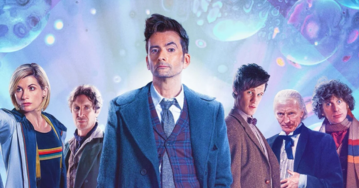
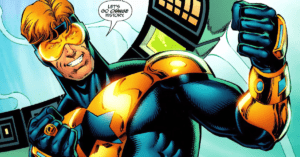
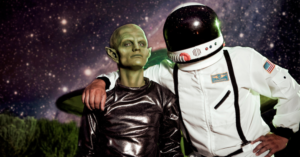
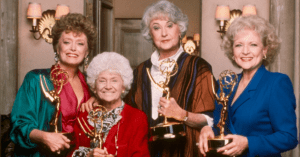





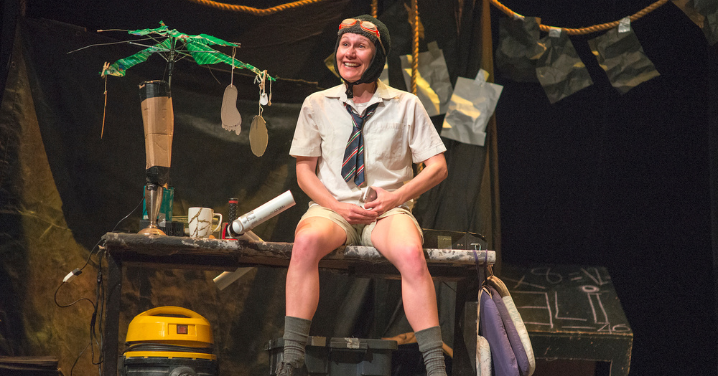


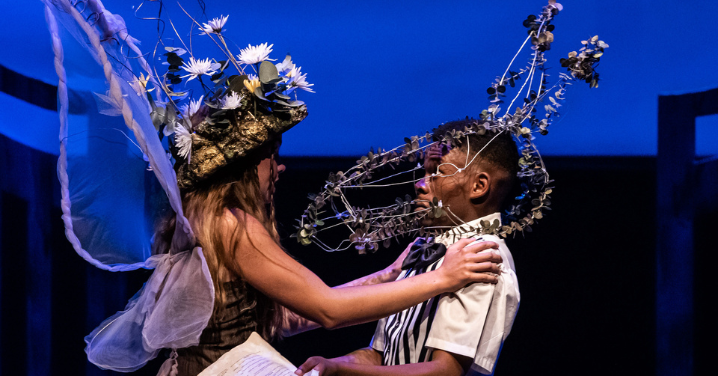

[…] Doctor Who Enemies | Doctor Who Facts | Doctor Who Timeline […]
[…] Doctor Who Timeline | Doctor Who Enemies | Doctor Who Facts […]